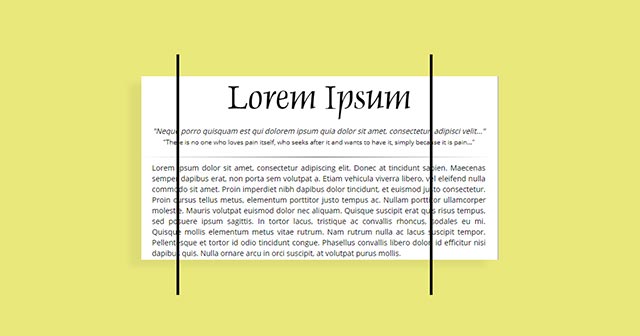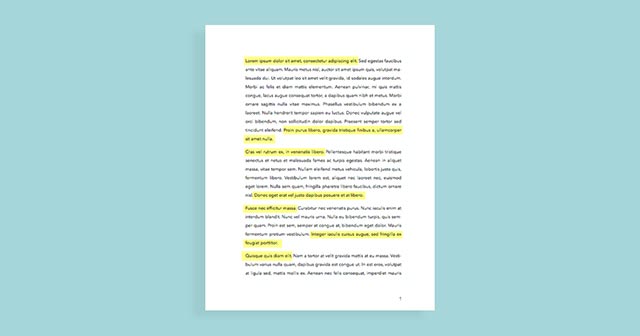The Absolute Beginner’s Guide to Speed Reading
More articles about speed reading:
1) How To Speed Read With Best Speed Reading Tools;
2) 5 Brain Games For Speed Reading;
3) 10 Youtube Videos About Speed Reading.
Good reading techniques will make you enjoy reading again. Start today.
Picture this: you’re sat with your reading materials in front of you, and you tell yourself: alright, I have to concentrate and get this done. Minutes tick by and eventually you give up, distracted by your email or your phone. You glance at the time and you see some 30 minutes have passed. And yet, you haven’t retained much from your reading session and you’ve barely put a dent in your huge reading list.
Sick of that happening?
Let me tell you something that will change your mindset. Reading is a game of mental agility, not patience. Whether your reading list entails academic texts, news articles or literature, time is not your main limiting factor. It’s your mental agility. Thankfully, you can train yourself to become a better reader. Let’s explore how.
How Can Speed Reading Make Your Life Better?
It Helps You Save Time
You likely spend a lot of time reading every day. We are surrounded by the written word: on the internet, in books and even on TV. It is estimated that the average person reads several thousand words a day, depending on their occupation. Suffice to say, if you have an office-based job, you probably need to read a lot. And by that I mean, all the time.
Reading inefficiently can cause frustration, on the job and beyond: whether because the text is technical and difficult to understand, or because it takes a long time, or both. Learning to speed read can save some of the reading time for more enjoyable, fulfilling tasks.
It Makes You More Efficient
Speed reading is not only about flicking though text faster. It is about being more efficient. It has been shown that fast readers retain more information than slower readers. Using a proper reading technique can reduce the need to read over the same paragraph twice to gauge its meaning.
Furthermore, it can improve your ability to abstract meaning and pick apart key points. Often, when we approach reading without sticking to a technique, we get lost in details. Thus, we take longer to understand the concepts and retain information. Speed reading removes this barrier between you and the text, ensuring you can access the meaning of the text easily.
It Develops Your Cognitive Abilities
We’ve all been there: once you leave school, you feel like your mental agility is declining at a steadfast rate. The better you get at your day job, the more likely you are to become hyper-specialised and fall into a routine. This is great for your career but not the best news for your brain, who needs constant stimulation to keep up its agility.
After all, there’s a reason why successful people like Bill Gates are avid readres, beyond the thirst for knowledge. As far as acquiring knowledge goes, reading off of a page is one of the last efficient ways to learn. The eyes need to scan the environment for symbols and the brain needs to decipher them and translate them to more “natural” auditory language, as a researcher at Washington University in St. Louis describes. The same researcher describes reading as a cognitively demanding task that involves multiple processes and stresses the importance of using proper technique to tackle it.
Unlearning These Three Bad Reading Habits Is The Key to Speed Reading
Take a moment to examine your current reading technique. There are three main reading habits you need to break to ensure you can read faster. While you carry on reading this text, try to see for yourself how many of the following three reading habits you need to break:
- Speaking the words in your head. Did you know that our vocal cords actually move as you are reading? This is a process called subvocalisation. Subvocalisation is how you learn how to read as a child, by taking the words from the page and making them into a monologue in your head. This was likely further enhanced by having to read out loud, for example in class or in front of your parents/guardians.
- Going back over words you have already read. This is a very common reading mistake that slows you down. However, it can be very difficult to notice unless you are really attentive to how you read. Because our eyes tend to always roam over the page, we involuntarily pick up words and sometimes even whole sentences that we’ve already read. As you are unaware of doing it, backtracking is harder to tackle than subvocalisation.
- You read words one at a time. Early in our childhoods, we are taught to read and often enunciate every syllable of every word to ensure we develop vocabulary and pronunciation. This is also known as ‘word churning’. As adults, we don’t need to do this, quite the opposite! You need to train your eyes to roam over the page less and fixate on fewer words, letting your peripheral vision to the rest.
There are several techniques you can try to help you break these reading habits. Just as you would approach learning any new skill, the key to mastering speed reading is to be as consistent as possible.
In the next section, several techniques will be explored. However, a good approach would be to pick one in the first instance. Once you have practiced it enough, it should break some of your bad reading habits and help you take on new techniques to make your reading experience even more efficient.
4 Speed Reading Techniques and Why They Work
Fixate Only on a Few Words on Each Line
This is one of the most popular speed reading techniques because it forces you to stop reading words one at a time and reduces your ability to subvocalise. Here is one way you can do it: when glancing at the page, only read the words that are in the middle of the line. Let your peripheral vision fill in the left-most and right-most words as you go along. It might be easy enough to do at first, but remember to stay consistent. Do not rush. Fixate on the middle words and concentrate as you normally would. You will notice your understanding of the text actually increases, as a consequence of you skipping subvocalisation and concentrating on gauging the meaning of the sentence.
Be careful not to overdo it, because you risk skimming the text instead of actually reading it. It’s been emphasised by researchers that English speakers can read only two to three words from the peripheral vision when they are on the right, and about one word to the left. Thus, make sure you skip the first one or two words at the beginning of the line, but no more. You can be less stringent towards the end of the line and still retain comprehension.

Guide lines showing the focus area.
Cover The Words You Already Read
While the previous technique tackles subvocalisation and word-churning, this technique deals with the third reading habit holding you back: re-reading the words you have already read. This happens because our eyes naturally roam over the page. It is generally a waste of time, especially when you are not aware of how frequently you go back over previous words.
To avoid this, use a piece of paper or your hand to cover the lines as you already read. If reading on a screen, you can use the cursor or a stylus to follow the text as you are reading. Covering the the text and/or using a pointer both achieve the same thing: they stop your eyes from moving around the page aimlessly, looking for words to read.
Your eyes can only read when they are stationary. Thus, giving yourself a certain visual stimulus like a piece of paper or the mouse cursor helps your eyes minimise movement and concentrate better on reading.
Use a Timer
There is only one way to track your progress as you learn how to speed read: time yourself. Time is difficult to track without a timer, especially when concentrating on understanding new information. Thus, your timepiece is your friend when reading.
Start by timing your reading casually and keep a record with your lines-per-minute rate. Don’t set up any alarms yet and most importantly, do not rush without reason. Try to fall back on the techniques you already know and take your time mastering them, instead of rushing. Once you are comfortable controlling your eye movements and reducing subvocalisation, start setting time goals based on your “casual reading” rate. Incrementally push yourself to read faster than you are comfortable and focus on staying consistent with
Skim The Text
Finally, depending on your reading goals, it might be a good idea to skim the text instead of reading it. If you require an in-depth understanding of the text, other speed reading techniques would be more suitable. However, if you only need a surface-level understanding of the overall text, an efficient skim-reading technique will do the job.
Unlike the name implies, skim reading should not be a random, haphazard process. One efficient way to skim read involves the following steps:
Step 1. Get familiar with the overall structure of the text: you need to pay attention to any titles, headings, and other delimitations between different concepts within the text.
Step 2: Once you have identified the different sections of the text (Step 1), read the first and last sentence of every paragraph. Do not rush, as you are saving time by skipping large portions of text. Try to understand what you do read to the best of your ability.
Step 3: Fill in the gaps by circling or highlighting key words, such as proper nouns, words/phrases that appear repeatedly or that you do not recognise.
This skimming technique should give you a good grasp of what the text is about, but will lack the detail you would get using regular speed reading techniques. Use carefully!

Skim read by picking out the first and last sentences of a paragraph.
Tools For Your Speed Reading Journey
- You can improve your mental agility by training your brain with dedicated apps like Readlax.
- You can use a journal to track your progress. Remember, practice is essential for breaking slow reading habits.
- For reading PDFs, Adobe Reader has a dedicated mode for focused, distraction free reading called ‘liquid mode’: use it!
- For reading online use Readlax Chrome extension with Reader view mode.
- When reading on a screen, make sure the brightness in comfortable and that you are using dark mode if available, to mitigate eye strain.
